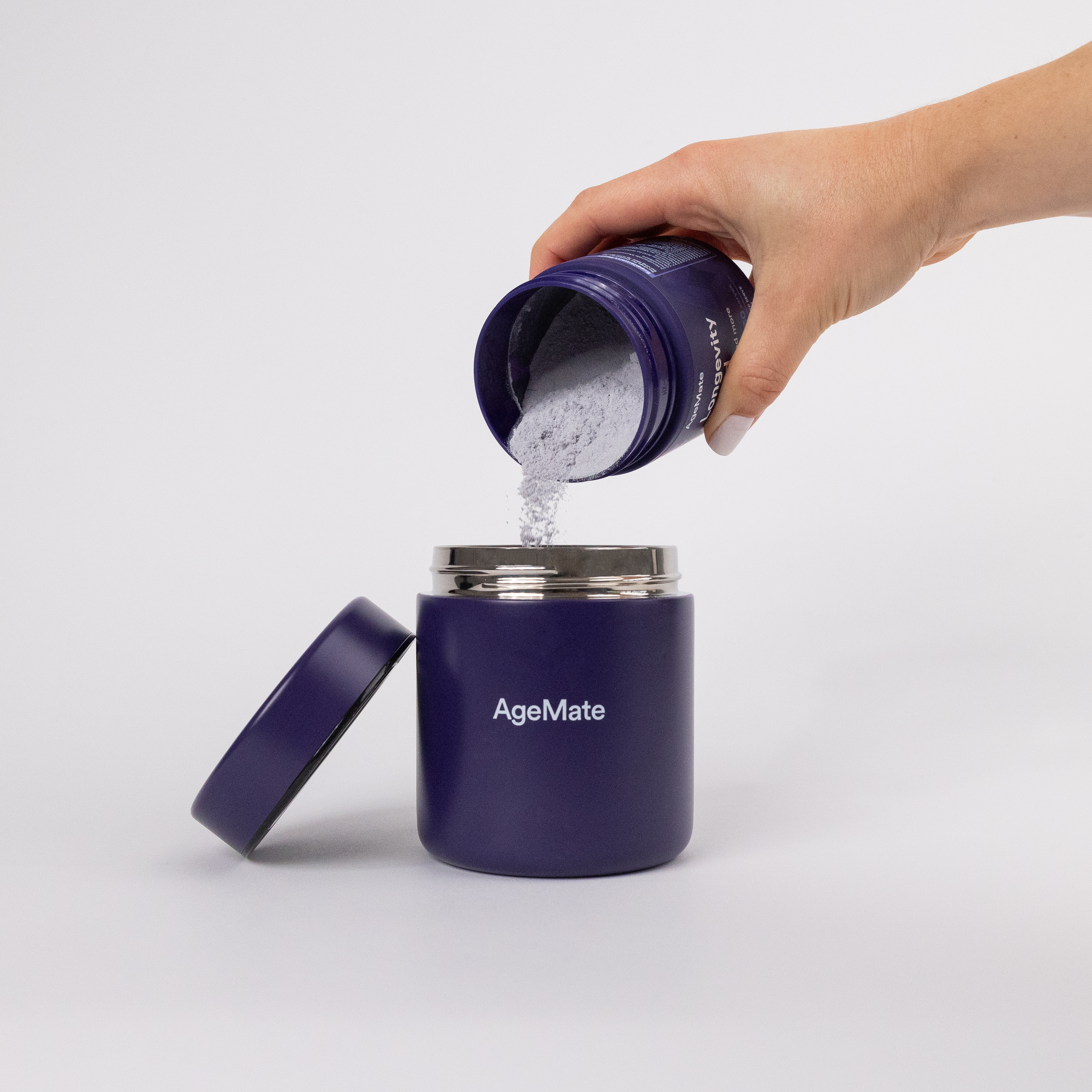Key Takeaways
-
Swapping animal protein for legumes at lunch can help lower inflammation and support healthy ageing.
-
Legumes like lentils and chickpeas are linked to longer lifespans in large population studies.
-
Making a simple switch to a plant-forward lunch boosts fibre, balances blood sugar and benefits your gut microbiome.
In every one of the world’s Blue Zones—regions with the highest concentration of people living beyond 100—lunch is the biggest meal of the day, and legumes are the shining star on the plate.
Think lentils in Sardinia, black beans in Costa Rica, and soybeans in Okinawa. And these aren’t just side dishes. They’re the main event. If you’re looking for one simple, science-backed change to support your health as you age, consider this: making legumes the heart of your lunch.
Let’s dive into why that small change can bring big rewards—without overhauling your entire lifestyle.

The Power of Plant-Based Protein
Protein is a hot topic in healthy ageing, and for good reason. Your muscles need it, your immune system thrives on it, and it keeps you feeling full and energised. But not all proteins are created equal.
Animal proteins, especially red and processed meats, are linked to chronic inflammation and age-related diseases when consumed in large amounts. On the flip side, plant-based proteins—especially legumes like lentils, chickpeas, and beans—are packed with fibre, antioxidants, and phytonutrients that animal proteins simply don’t offer (R).
What’s more, legumes have a lower calorie density. That means you can eat a hearty portion that’s satisfying but not heavy. Perfect for that midday energy boost without the slump.
Legumes and Longevity: The Surprising Research
A landmark study published in the Asia Pacific Journal of Clinical Nutrition found that legume consumption was the strongest dietary predictor of survival among the elderly, across five countries including Japan, Sweden, and Australia (R). Just one serving a day (about half a cup) was associated with an 8% reduction in mortality risk.
How do legumes work their magic? They’re anti-inflammatory, support steady blood sugar levels, and promote a healthy gut microbiome—all essential for ageing well.
Your gut, in particular, plays a key role. Studies show that the diversity of gut bacteria decreases with age, which is linked to lower resilience and a higher risk of disease. Legumes, rich in fermentable fibres, feed those “good” bacteria and help keep your microbiome thriving (R).

The Midday Advantage
Eating legumes at lunch specifically may offer extra benefits. Your body’s insulin sensitivity naturally dips in the afternoon and evening, especially as you get older. That makes lunch a prime opportunity to include foods that stabilise blood sugar and reduce the glycaemic load of the meal.
Legumes have a low glycaemic index and help slow the absorption of carbohydrates from other foods. That means less glucose in your bloodstream, fewer energy crashes, and long-term protection for your cardiovascular system (R).
Add in potassium, magnesium, and folate—three heart-loving nutrients legumes are packed with—and you’ve got a lunchtime hero that does far more than fill you up.
How to Make the Swap
You don’t need to go full vegetarian to reap the rewards. Start with a swap. If you usually have a ham sandwich or chicken salad, try one of these easy, tasty alternatives:
- Lentil and roasted veggie wrap with hummus and spinach
- Chickpea and avocado smash on wholegrain toast with tomato
- Three-bean salad with lemon, parsley, and olive oil
- Red lentil soup with sourdough and a side of steamed greens

To add a little extra veggie boost, top your chickpeas with roasted pumpkin or throw some edamame into a salad with a lime dressing.
Legumes are also budget-friendly and shelf-stable—so you’re saving time and money while boosting your longevity. How’s that for a win?
Tips to Overcome the Bean Bloat
Worried about digestive discomfort? You’re not alone. Many people avoid legumes because they think they’ll cause bloating. But with a few simple tips, you can avoid the dreaded “bean belly.”
- Start small: Begin with a few tablespoons and gradually increase.
- Soak and rinse: If using dried beans, soak overnight. If using canned, rinse thoroughly.
- Chew well: This helps break down the fibres and gives your gut a head start.
- Spice it up: Cumin, fennel, and ginger aid digestion and add lovely flavour.
Your gut will adjust within a couple of weeks, and many people find they can comfortably enjoy a full serving daily without any issues.
Empower Your Ageing Journey with One Change
Ageing isn’t something to fear—it’s a process to embrace with grace, wisdom, and great food. By swapping one lunch a day to focus on legumes, you’re not just adding years to your life—you’re adding vitality to those years.
You’re supporting your heart, your gut, your brain, and your energy levels. All with a bowl of lentils or a spoonful of beans. It’s the kind of small change that doesn’t ask much of you—but gives you plenty in return.
So, next time you’re prepping your midday meal, ask yourself: Could I pop some legumes in here?
Check out our next blog on How to Craft a Longevity Breakfast – it’s packed with practical tips and easy ways to support healthy ageing every morning.























